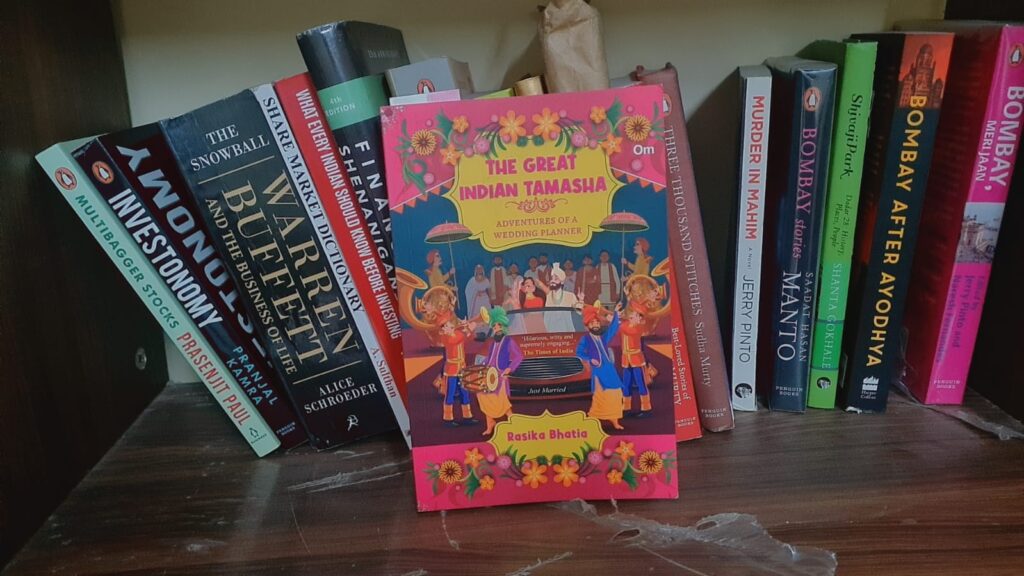With destination weddings, experiential events, and curated guest lists gaining popularity, the wedding planner has become a permanent fixture on the shaadi scene not just as the event organizer but as the friend, philosopher, and guide to the entire khandaan.
As we immerse ourselves in the chaos of the stories laced with black humour, we are exposed to the dark underbelly of the weddings of the affluent and influential. These weddings are more than just a glamorous return to traditions or celebration of new kinship bonds; they have come to epitomise conspicuous consumption and a show of strength.
Well-known wedding planner Rasika Bhatia’s incisive portrayal of spirited brides, hesitant grooms, controlling parents, greedy in-laws, fraudulent clients, and conniving competitors aptly depicts the behind-the-scenes shenanigans of the modern big, fat Indian wedding that has indeed become a tamasha.

I have always enjoyed attending weddings and celebrating marriage. When attending the functions, I also admire the set-up and click tonnes of pictures with the different elements present. However, not once in my 21 years have I ever stopped to think about who came up with the ideas. Or who worked day and night to bring the vision to life? Or how long it took for the set-up to be arranged. Aptly titled, this book brings our focus to the behind-the-scene struggles that go into setting up the big, fat Indian weddings or the Great Indian Tamashas.
Besides narrating the hilarious and eye-opening encounters of Rasika, The Great Indian Tamasha, has helped me realise the efforts that go into making a wedding beautiful and successful. From coming up with themes to finalizing them, from booking venues to decorating them, from handling guests to wrapping everything up, each stage of wedding planning has its issues and rewards.
The book is a compilation of about twenty-two stories each of which are hilarious and eye-opening. Rasika has managed to point out the flaws, especially corruption in the industry without making the book seem too serious. She has used the tool of humour to engage the reader and show them some behind-the-scenes memories of her journey as a wedding planner.
The best part about the book for me was her thought process. She has used Hindi phrases at certain parts of the story to convey the true feeling and has been successful in doing so. The free-flowing and casual language of the book makes it a perfect light-hearted read for someone who is going through a reader’s block. This book can easily open your mind and relax you to get back on the road with your reading journey.
The beautiful caricatures add another unique touch to the book. These illustrations help visualise the setting and in some situations, make the story even more funny.
After reading these few stories, I am wondering what is left unsaid. I am sure that there must be many more hilarious and even some provoking instances that she keeps experiencing and am looking forward to getting to know them someday.
If I have to point out a favourite, then I would say that the story about the Punjabi wedding with the overactive mother made me laugh the most. More than her actions, Rasika and her team’s reactions and what they said made me roll over with laughter. The best part is that the book comments on people in general without stereotyping any particular style of wedding or any class of people.
